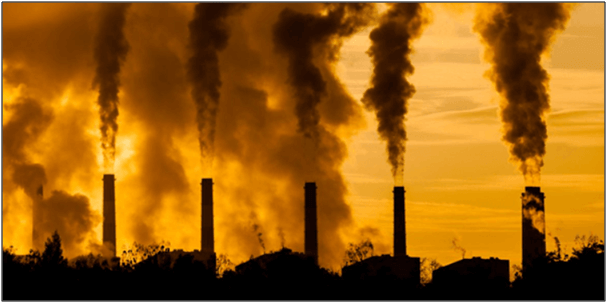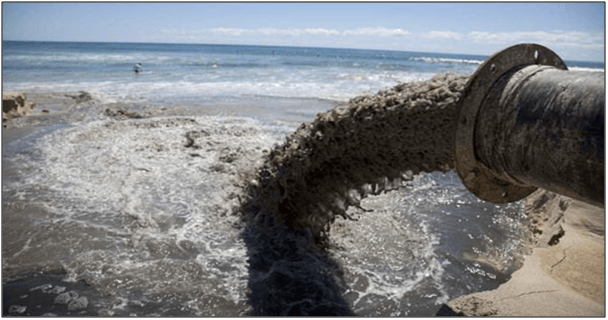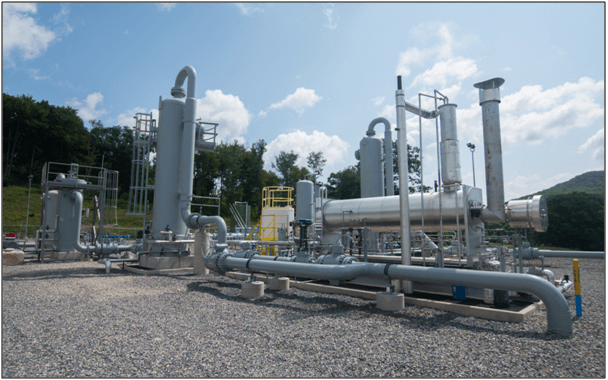The efficient transportation of natural gas from production areas to consumption areas requires extensive and complex transportation systems. In many cases, the natural gas produced from a specific well must travel a long distance before it can be delivered to the final consumer. The natural gas transportation system consists of a complex pipeline network designed to transport natural gas quickly and effectively from the place of production to market. The transportation of natural gas is closely related to its storage. If the natural gas does not need to be transported immediately, it can be placed in a storage facility when needed. This article discusses some crucial factors for transporting natural gas.
Table of Contents
Environmental Impact of Air and Water Pollution
Although there are many characteristics that make natural gas an efficient, relatively clean combustion and economical energy. However, there are some environmental and safety issues that need to be considered in the production and use of natural gas. The serious impacts on our communities and wasteland include pollution, global warming emissions, climate change, wasteland ruins, etc.Air pollution is a well-known environmental health hazard. Burning natural gas will produces a form of nitrogen oxides (NOx), which is a precursor to smog. The development of unconventional natural gas will affect local and regional air quality. Dangerous air pollutants and two of the six “standard pollutants”—particulate matter and ozone and their precursors—in some areas where drilling occurred because of their harmful effects on health and the environment. Long-term inhalation of high concentrations of air pollutants can cause adverse health consequences, including cancer, respiratory symptoms and cardiovascular disease.

Unconventional oil and gas development will pose a risk to health of nearby communities because the drinking water sources are contaminated by hazardous chemicals used in drilling wellbores, hydraulic fracturing, oil or gas processing and refining, or wastewater treatment. The large amount of water used in unconventional oil and gas development has also caused water supply problems in some communities.

Global Warming and Wildlife
Drilling and mining natural gas from the well and transporting it through pipelines can cause methane leakage. The components of natural gas include ethane, butane, and propane, of which methane is the main component. Whether natural gas has low life-cycle greenhouse gas emissions depends on factors such as leakage rate, global warming potential of methane in different time frames, and energy conversion efficiency.The construction and land disturbance required for oil and gas drilling can lead to erosion and demolition of wildlife habitats and migration patterns, thereby changing land use and damaging local ecosystems. When oil and gas operators’ cleanup sites to build well sites, pipelines, and passageway, the construction process can cause dirt, minerals, and other harmful pollutants to erode into nearby streams.
Natural Gas Transmission Pipes
Transmission pipelines are used to transport gas or crude oil from their respective collection systems to refining, production, storage facilities, as well as across states, countries, and continents to final consumers. The diameter of the transmission pipe is slightly larger, generally between 6 to 48 inches (DN150-1200). This type of pipe is produced in steel mills and is sometimes dedicated to the production of pipes. It is divided into two different production processes, called small diameter pipe and large diameter pipe. For large diameter pipes 20 to 42 inches in diameter, the pipe is made of sheet metal folded into a tube, and the ends are welded together to form a pipe section. In addition, small diameter tubes can be produced seamlessly. This includes heating a metal rod to a very high temperature and then punching a hole in the middle of the rod to produce a hollow tube. In either case, all pipeline must be tested before being transported from the steel plant to ensure that they meet the pressure and strength standards for transporting natural gas.

Gas Compressor Stations
A compressor station is a facility that helps transport natural gas from various production well sites to end users. When natural gas passes through the pipeline, the distance, friction, and altitude differences will reduce the pressure and slow down the gas’s speed. To ensure that the natural gas flowing through any pipeline remains pressurized, the natural gas needs to be compressed regularly along the pipeline. Compressor stations are usually placed at intervals of 40 to 100 miles along the gathering and transportation network to help natural gas continue to flow and reach greater distances. Most compressor stations are driven by electricity. The gas compressor can be driven by a conventional piston engine or a natural gas turbine. Besides to compressing natural gas, the compressor station also contains some type of liquid separator to capture any liquid or other unwanted particles in the natural gas pipeline. Even if the natural gas in the pipeline is considered “dry” gas, it will also condense a certain amount of water and hydrocarbons during the transportation process. The separator in the compression station filters the gas before compression to ensure that the natural gas in the pipeline is as pure as possible.

Gas Metering Stations
Apart to compressing natural gas to reduce its volume and pushing it into the pipeline, metering stations are regularly established along the interstate natural gas pipeline. Metering and Regulation Station (M&R) tracks the transportation and distribution of natural gas. Pipeline companies able monitor the natural gas in the pipeline at these sites. The M&R station uses different gauges and other equipment to continuously measure the flow rate and reduce the pressure when the gas passes through the station when needed.

Inspection and Safety of Pipeline
The pipeline company regularly inspects pipelines for corrosion and defects to ensure the efficient and safe operation of the huge natural gas pipeline network. Usually this inspection is done by using sophisticated equipment called “smart pigs”. Smart pigs are smart robotic devices that are pushed down the pipeline to evaluate the inside of the pipeline. The smart pig can test the thickness and roundness of the pipeline, check for signs of corrosion, detect small leaks inside the pipeline and any other defects that may hinder gas flow or cause a potential safety risk to the pipeline operation. Sending smart pigs into the pipeline is appropriately called “pipeline pigging”.

Conclusion
In the process of natural gas transportation, the most important factor is safety. Natural gas is a flammable gas, improper handling may cause man-made or natural disasters. As natural gas leakage may cause an explosion, the government has formulated strict regulations and industry standards to ensure the safe transportation, storage, distribution and use of natural gas. The processed natural gas has no peculiar smell, so natural gas companies will add mercaptans to the natural gas. Mercaptan is a foul-smelling gas substance that smells like rotten eggs. When it is added to natural gas, people can smell the leak.
References
Andrew Chew Chun Kit, DLSM. (2021). “The Logistics of Transporting Oil to Client Destination”. Retrieved from SIPMM: https://publication.sipmm.edu.sg/logistics-transporting-oil-client-destination/, accessed 02/12/2021.
Dave Messersmith. (2015). “Understanding Natural Gas Compressor Stations”. Retrieved from https://extension.psu.edu/understanding-natural-gas-compressor-stations, accessed 02/12/2021.
Jackson Tin, DPSM. (2019). “Essential Strategies for Alignment of Sustainable Procurement”. Retrieved from SIPMM: https://publication.sipmm.edu.sg/essential-strategies-alignment-sustainable-procurement/, accessed 07/12/2021.
Janice Kang, DPSM. (2017). “Importance of Sustainable Procurement Practices in the Maritime Sector”. Retrieved from SIPMM: https://publication.sipmm.edu.sg/importance-sustainable-procurement-practices-maritime-sector/, accessed 04/12/2021.
Lim Shu Hui, ADPSM. (2017). “Impact of Shale Oil on Corporate Procurement in the Global Oil and Gas Industry”. Retrieved from SIPMM: https://publication.sipmm.edu.sg/impact-of-shale-oil-on-corporate-procurement-in-the-global-oil-and-gas-industry/ , accessed 01/12/2021.
RahamanLotfor, DLSM. (2019). “Managing Logistics Assets in the Construction Sector”. Retrieved from SIPMM: https://publication.sipmm.edu.sg/managing-logistics-assets-construction-sector/, accessed 04/12/2021.
SeahShiow Ling, PDPM. (2019). “Effective Procurement using RFID Technology for Oil Storage Terminals”. Retrieved from SIPMM: https://publication.sipmm.edu.sg/effective-procurement-using-rfid-technology-oil-storage-terminals/, accessed 03/12/2021.
Thomas Beuker (2009). “In-Line Inspection using Combined Technologies – Magnetic Flux Leakage and Ultrasonic Testing and their Advantages”. Retrieved from https://www.researchgate.net/figure/Magnetic-Flux-Leakage-MFL-and-Ultrasonic-Testing-UT-combined-on-a-single-in-line_fig1_237551949, accessed 02/12/2021.





